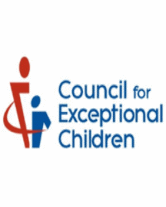A Team Effort: Getting Help for Students with ADD
You are not alone; in fact, good practices show that a team effort is the best approach in identifying and designing classroom interventions for students who have, or are suspected of having, attention deficit disorder. At the very least, you will want to seek out the advice of other professionals in your building.
If you are on a pre-referral team or teacher assistance team, you are part of a group decision-making body charged with the task of evaluating the assessment data. Some team members will eventually become involved with child study teams formal groups who design and monitor intervention programs for students identified as having attention deficit disorder.
As you work with these other professionals, don't hesitate to ask for their opinions about how best to help a child with attention deficit disorder. One of their ideas just might be what you need to make a significant difference in your student's progress.
Ideas for Working on a Team
A well-designed process or protocol will help groups stay on track and make collective decisions that follow a logical progression. Using such an approach, data can be collected and organized according to key decision points, such as those used by the Anchorage Public Schools. In that district, the child's educational history and cumulative file is screened first, then the interventions that have been tried are discussed and the teacher's rating scale is reviewed.
The group will consider a formal evaluation only if there is a history of poor performance, reasonable accommodations have been unsuccessful, and informal measures suggest that more formal assessment might be warranted. If these three elements are not consistent, it is up to the group to ascertain other reasons that might explain the student's behaviors.
Moving Ahead
Your work will be guided by the identification and evaluation phase, in which you will make ongoing efforts to identify the student's characteristics and needs, match them to effective classroom practice, and evaluate progress. Regardless of the outcome of the identification and screening process, that information can be useful in designing quality lessons and in delivering effective instruction.
Excerpted from Teaching Strategies: Education of Children with Attention Deficit Disorder.








